The Volvo Chronicle
Page 6
By Christoph Büch (Berlin 2024)
In 1973, Volvo introduced all-new N models to replace the aging N 86 and N 88 conventionals. Although the predecessors were technically up to date, the cab was still from the 1950s. The new trucks N 7, N 10 and N 12 were fitted with a compact plastic hood that could be tilted completely forwards for maintenance purposes. Safety was ensured by the protected electrical system in the cab area. Also new were a robust frame and, as an option, a double drive bogie. This meant that the new conventionals were especially suitable for tough work operations in Asia, Africa and South America.

In the 1970s, the Swedish Army received a newly designed light all-terrain vehicle as a successor to the "Laplander", which was also available for civilian use. Newly developed portal axles provided the necessary off-road capability, and the power source was a six-cylinder gasoline engine. The C 300 series was produced in 4x4 and 6x6 versions with a total of 8718 being built from 1974 to 1979.
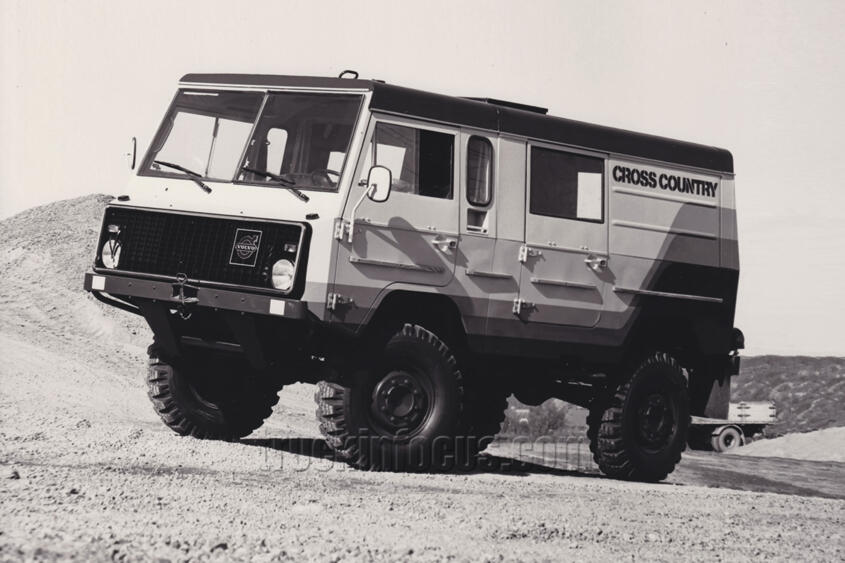
Volvo in the Club of Four
For the development of a new model generation in the medium class, Volvo joined forces with the manufacturers DAF, Magirus and Saviem in 1971 to form the "Club of Four". The concept promised advantages for all parties involved, since the medium-duty vehicles of the four manufacturers were offered almost exclusively on their respective home markets, i.e. they did not compete with each other. The first models appeared in 1974 and 1975. The cab and brake system were the same on DAF, Saviem and Magirus. Volvo strengthened the cab to meet Swedish impact regulations. The vehicles differed in terms of engines, transmissions, axle drives and interior equipment. The grille design also had individual features for each manufacturer.
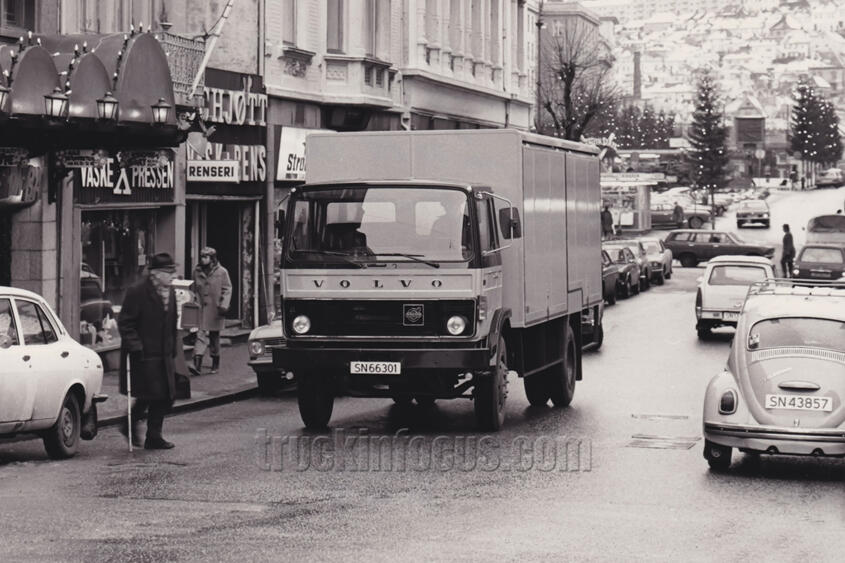
At Volvo, the Club of Four models were called F4 for 5.5 to 7.5 tons gross weight and F6 for 9.0 to 13.5 tons. The available diesel engines produced 80 to 180 hp. As the smallest diesel, Volvo offered a Perkins four-cylinder with a displacement of 3.86 liters. A ZF five-speed transmission was also offered. From 1975 to 1986, Volvo produced more than 45,000 Club of Four trucks. Starting in 1976, they were also exported to the U.S., because American manufacturers did not have any compact cab-overs with diesel engines on offer to counter the energy crisis prevailing worldwide at the time. Considerable numbers also went to France and the Benelux region. However, increasing competition from Saviem and DAF led Volvo to leave the Club of Four in 1985 and develop a new mid-size truck on its own.
Cubic generation and F7
As successors to the aging F 88 and F 89 models, Volvo introduced the F 10 and F 12 in 1977. The cubically shaped cab was designed according to ergonomic principles. It was equipped with coil springs to absorb vibrations and shocks and was the first to include integrated air conditioning, initially as an option and later as standard. The engines produced 280 and 330 hp. Various transmissions and gear ratios were available, such as the proven 16-speed transmission alongside a newly developed 12-speed transmission with crawler.
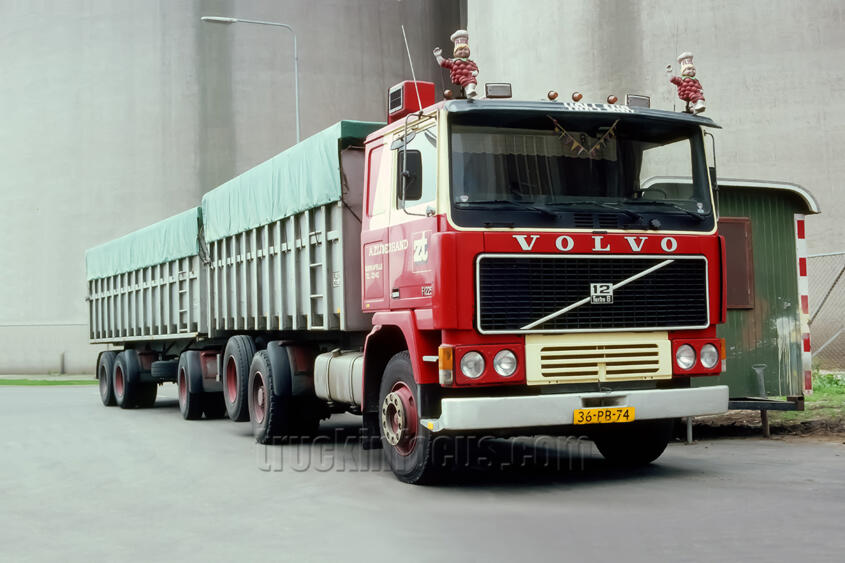
In 1978, Volvo replaced the F 86 series by cooperating with Renault, which was also working on a new mid-size model at the time. The result was a big brother to the Club of Four cab. They used its side panels, but widened and lengthened the cab while retaining the styling elements. At Volvo new models were called F6 S and F7. Two engine versions, TD 60 with 180 hp, and TD 70 with 212 hp were available. Particularly in Britain, the F7 was increasingly used at maximum weight in the 1978 to 1983 period, which led to the development of a long-distance cab with a sleeping berth. Customer demand for more power led to the introduction of the turbo with integrated intercooler. The intercooled version of the 6.7 liter engine was rated at 245 hp. The simple functional design, low weight combined with the powerful and economical Intercooler diesel led to the F7 being voted "Truck of the Year" by an international jury of experts in 1979. In 1983, the appearance changed slightly: the F7 badge moved from the center of the radiator grille to the lower right corner and the bumper now featured two towing eyes instead of one.
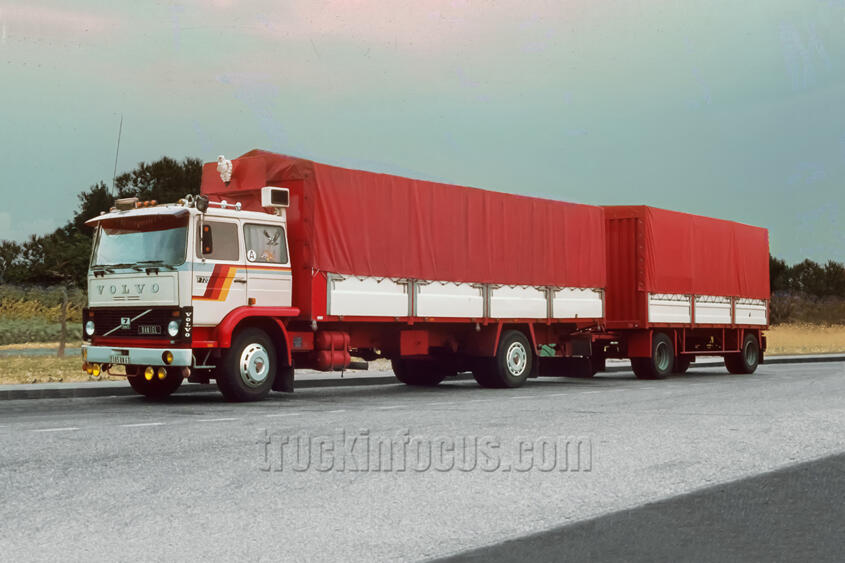
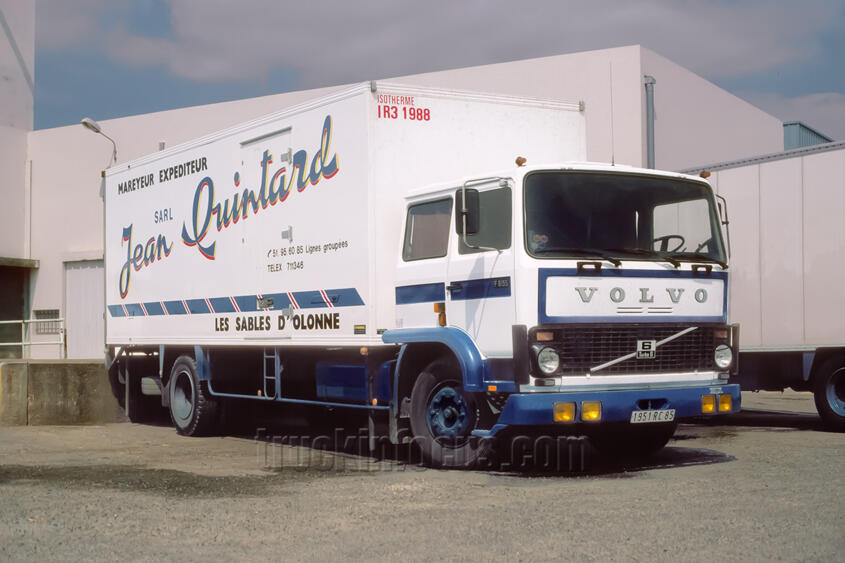
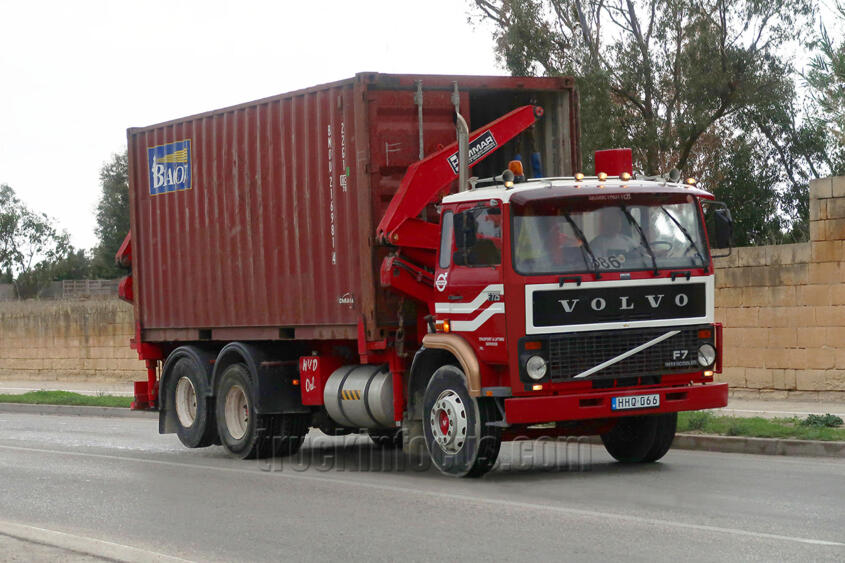
35,540 F7s were produced from 1978 to 1986. In addition, there were 9,736 units of the smaller F6 S, most of which remained in Scandinavia. Intercooler technology also benefited the F12, whose large six-cylinder, 12-liter intercooled version now produced 360 hp. In subsequent years, this technology was introduced on all engines.